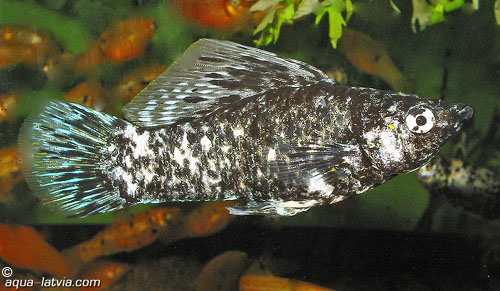As other members have pointed out, natural fish species are not the same as domesticated breeds of dogs, so no point in belabouring that obvious fact. It is not possible with fish to produce a "new species." For example, the Blue Gourami, Gold Gourami, Cosby Gourami, Three-Spot Gourami, Marble Gourami, and others I cannot now remember are all selectively bred from the same distinct species, Trichogaster trichopterus. These varieties are just that, varieties, not distinct species. And the same has occurred with the various colour forms of livebearers, some characins, etc.
As for possibly "succeeding" with a cross-breeding, you could end up with dozens if not hundreds of fry. You say you won't sell them, but unless you killed them all very early, you would find yourself having to do something to get rid of them, and they would likely end up in the hobby. This is something all responsible aquarists oppose, as do ichthyologists, because a "corruption of the gene pool" results. The fry might tend to exhibit the external characteristics of one or other species, to the extent that distinguishing them as something different is impossible except by DNA analysis.
We are dealing with natural species, and in more than one situation, aquarium bred fish may be the only extant members of a species, or may be used to repopulate the natural habitats. This opens up all sorts of issues for the ecosystems, something that all of us should be very concerned about in these days of environmental problems.
There are species that have different geographical populations where specific external characteristics have evolved over thousands of years that can identify those geographic populations. One example is the Marble Hatchetfish, Carnegiella strigata. All known species in this genus are polytipic (Gery, 1977), meaning that two (or more) distinct populations can be recognized within the species concept. In one watercourse, both populations of C. strigata can be found, but studies to date have shown that they never cross-breed, but remain true to their distinct population. It is wise to conclude that nature has its own reasons for this, and we are best leaving it alone.
Aquarists have to undertake a degree of responsibility, or they should not be in the hobby.



